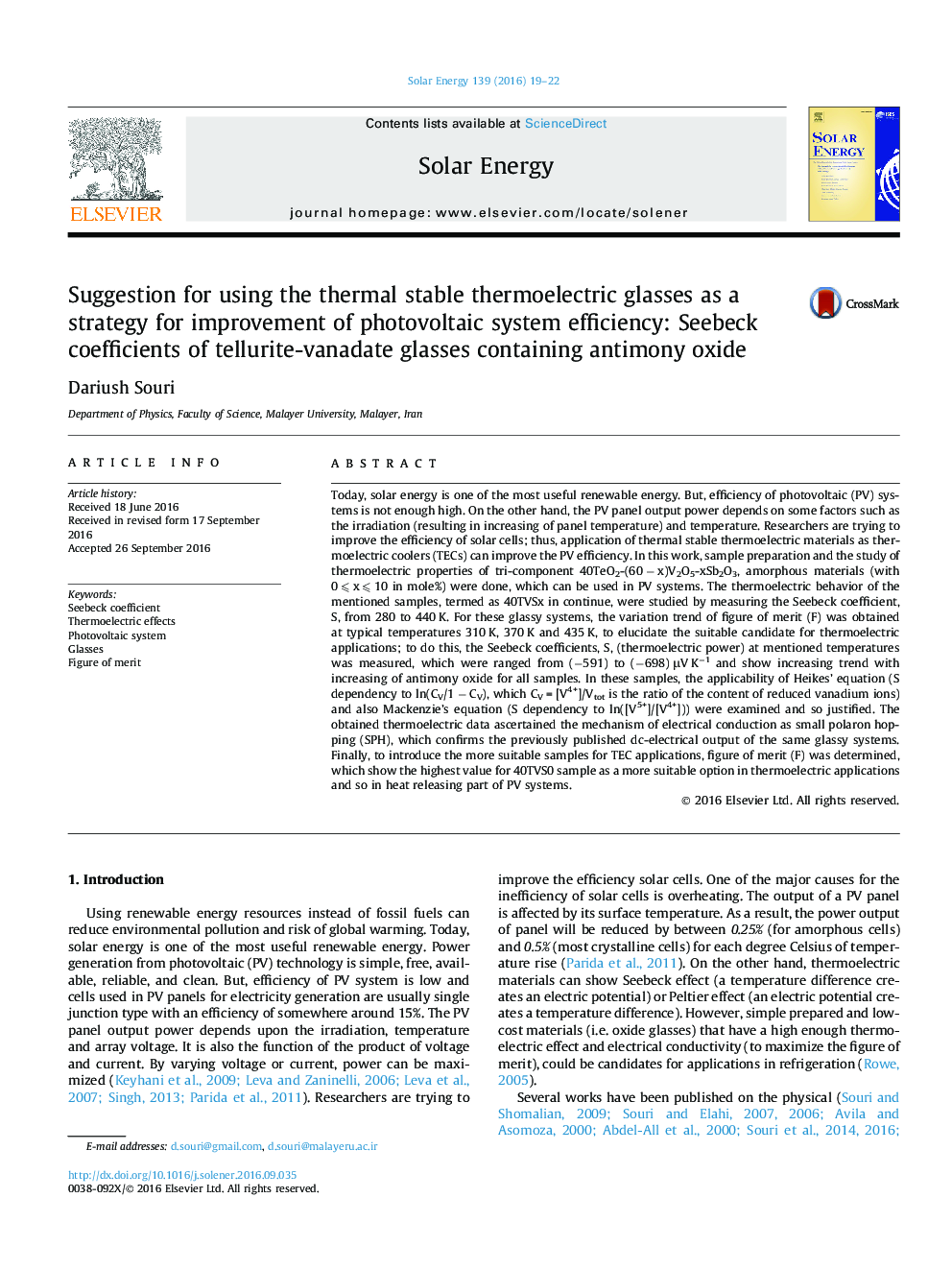| Article ID | Journal | Published Year | Pages | File Type |
|---|---|---|---|---|
| 5451367 | Solar Energy | 2016 | 4 Pages |
Abstract
Today, solar energy is one of the most useful renewable energy. But, efficiency of photovoltaic (PV) systems is not enough high. On the other hand, the PV panel output power depends on some factors such as the irradiation (resulting in increasing of panel temperature) and temperature. Researchers are trying to improve the efficiency of solar cells; thus, application of thermal stable thermoelectric materials as thermoelectric coolers (TECs) can improve the PV efficiency. In this work, sample preparation and the study of thermoelectric properties of tri-component 40TeO2-(60 â x)V2O5-xSb2O3, amorphous materials (with 0 ⩽ x ⩽ 10 in mole%) were done, which can be used in PV systems. The thermoelectric behavior of the mentioned samples, termed as 40TVSx in continue, were studied by measuring the Seebeck coefficient, S, from 280 to 440 K. For these glassy systems, the variation trend of figure of merit (F) was obtained at typical temperatures 310 K, 370 K and 435 K, to elucidate the suitable candidate for thermoelectric applications; to do this, the Seebeck coefficients, S, (thermoelectric power) at mentioned temperatures was measured, which were ranged from (â591) to (â698) μV Kâ1 and show increasing trend with increasing of antimony oxide for all samples. In these samples, the applicability of Heikes' equation (S dependency to ln(CV/1 â CV), which CV = [V4+]/Vtot is the ratio of the content of reduced vanadium ions) and also Mackenzie's equation (S dependency to ln([V5+]/[V4+])) were examined and so justified. The obtained thermoelectric data ascertained the mechanism of electrical conduction as small polaron hopping (SPH), which confirms the previously published dc-electrical output of the same glassy systems. Finally, to introduce the more suitable samples for TEC applications, figure of merit (F) was determined, which show the highest value for 40TVS0 sample as a more suitable option in thermoelectric applications and so in heat releasing part of PV systems.
Related Topics
Physical Sciences and Engineering
Energy
Renewable Energy, Sustainability and the Environment
Authors
Dariush Souri,
